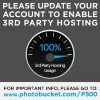atblis
Member
Just wondering if you guys have any insight as to how accurate chronographs are.
Specifically, have you ever done a comparison, like line up three different chronographs, one after the other?
I am not entirely sure I trust mine. It definitely "shifts" after it has warmed up. But that's reasonable for electronics, digital scales are the same way.
I have one of these.
http://www.midwayusa.com/viewproduct/?productnumber=852429
Sometimes I wonder.
Specifically, have you ever done a comparison, like line up three different chronographs, one after the other?
I am not entirely sure I trust mine. It definitely "shifts" after it has warmed up. But that's reasonable for electronics, digital scales are the same way.
I have one of these.
http://www.midwayusa.com/viewproduct/?productnumber=852429
Sometimes I wonder.




